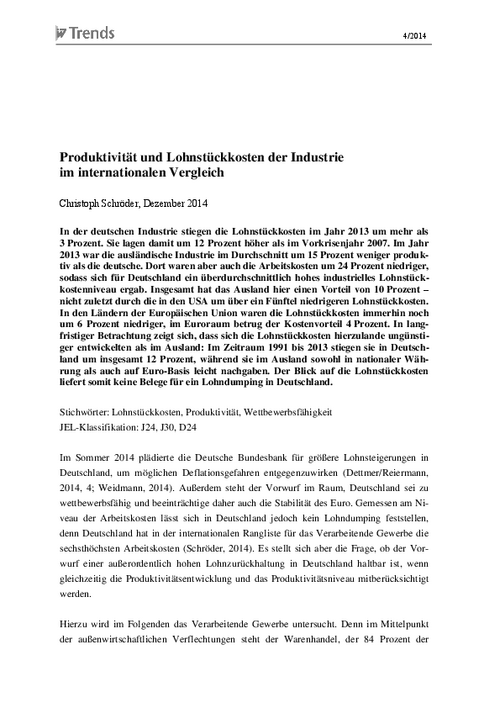In 2013 unit labour costs in German manufacturing industry increased by more than 3 per cent to a level 12 per cent higher than in the pre-crisis year of 2007. In the same year manufacturing in other countries was on average 15 per cent less productive than in Ger-many. However, foreign labour costs were also 24 per cent lower, leaving Germany with industrial unit labour costs at an outstandingly high level. The foreign competition has an overall advantage of 10 per cent, due not least to the approximately 20 per cent lower unit labour costs in the USA. Even European Union Member States had unit labour costs 6 per cent under the German level, while the cost advantage for the other countries in the Euro-zone is only 4 per cent. Over the long term, unit labour costs can be seen to have developed less favourably in Germany than abroad, increasing between 1991 and 2013 by an overall 12 per cent, while beyond the German borders they eased slightly in both national-currency and euro terms. An analysis of unit labour costs therefore provides no evidence of irre-sponsibly low wages in Germany.

An International Comparison of Productivity and Unit Labour Costs in Manufacturing Industry
IW-Trends


Christoph Schröder: Produktivität und Lohnstückkosten der Industrie im internationalen Vergleich
IW-Trends

More on the topic

Pharmaceutical industry: Increasing pressure on the labor market
The shortage of skilled workers poses significant challenges for pharmaceutical companies in Germany and is expected to become increasingly problematic in the context of demographic changes. Concerning Germany's positioning in the international competition ...
IW
Industrial policy at the turn of the times
The current debate on industrial policy vacillates between the extreme positions of an orthodoxy of rejecting state action and a naive belief in the state's ability to control structural change.
IW